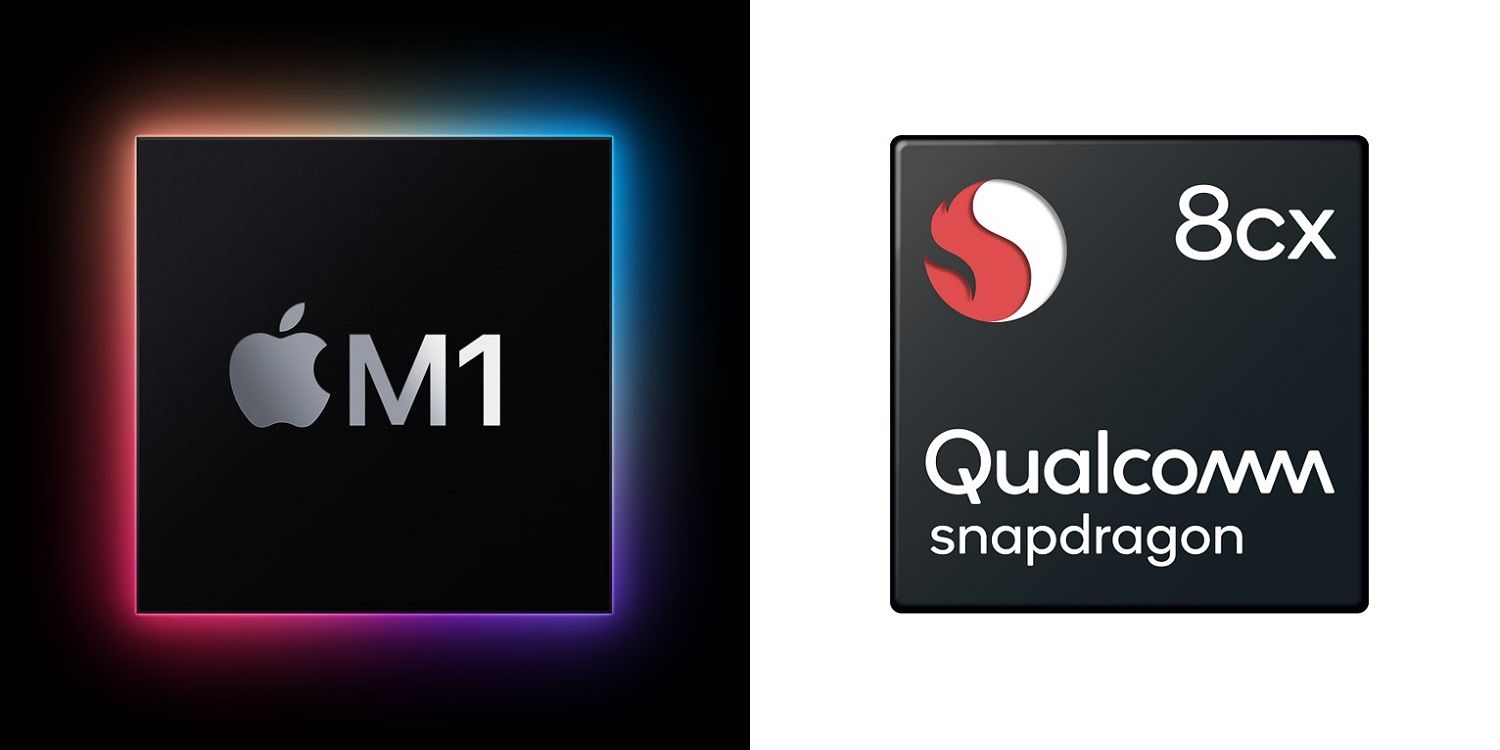
Apple now has a new CPU specifically designed for use in its Mac line: the M1. Announced at the 'One More Thing' event in November 2020, the M1 chip marks the first time Apple has used its own system-on-a-chip design in a Mac, but how does it compare to Qualcomm's SoC solution for mobile PCs? Qualcomm's own Snapdragon 8cx Gen 2 5G Compute Platform was announced back in September 2020 and is designed for use in 2-in-1 laptops from various PC manufacturers.
Apple's One More Thing event was the company's latest major tech event of 2020, following its Worldwide Developers Conference in June, Apple Watch and iPad announcements in September, and the iPhone 12 series launch in October. The final November event contained a series of different Mac-related announcements, including updates on the newest iteration of its operating system, macOS Big Sur, as well as the new computers featuring the aforementioned M1 chip.
The M1 chip appears to be quite the jump in technology, at least compared to previous Macs. Apple claims the new chip is the world’s fastest CPU core in low-power silicon, has the best CPU performance per watt, and the fastest integrated graphics on a PC. It supposedly offers up to 3.5 times faster CPU performance and up to 15 times faster machine learning due to its Apple Neural Engine, whose 16-core architecture allows it to make 11 trillion operations per second. Tests by Apple were performed in October 2020, with the CPU performance test comparing preproduction 13-inch MacBook Pro systems (with Apple M1 chip) to 1.2GHz quad-core Intel Core i7-based MacBook Air models, both sets of machines having 16GB of RAM and 2TB of storage.
Compared to the Snapdragon 8cx Gen 2 5G, the M1 chip certainly has smaller components, which could mean faster. It uses 5nm process technology, whereas the 8cx Gen 2 uses a 7nm process. The M1 has more than 16 billion transistors, which is more than Apple has ever put in a chip before. This allows it make much faster calculations than Apple's other products, but how it compares to other laptop chips is somewhat unclear. The Snapdragon 8cx Gen 2 5G doesn't provide a transistor count, but both CPUs have eight cores, with the 8cx's Kryo 495 running at up to 2.84 GHz on its faster four cores.

According to Apple, the M1 chip offers up to six times faster graphics than other laptops. The company pitted its MacBook Pro models, with the same specs as the ones in the performance test, against the most-recently available high-end notebooks, but it doesn't specify which ones they were. While it doesn't mention speed, the 8cx Gen 2 uses Adreno GPU architecture with DirectX 12 support. Its GPU offers support for dual monitors and video playback of 4K HDR video of up to 120fps. This may give it the edge over Apple. While it says the M1 can handle multiple 4K video streams for rendering 3D scenes, and that its image signal sensor allows for greater dynamic range, Apple makes no specific mention of HDR or whether it can support displays that can play 4K videos at higher than 60fps.
Both the M1 and 8cx Gen 2 offer improvements in terms of battery life. Due its more efficient design, the M1 offers up to two times more battery life than previous-generation Macs. Similarly, the 8cx Gen 2 offers multi-day battery life on some of the systems it runs on. The 8cx Gen 2 CPU is designed to run on laptops that are always on and always connected, so battery drain would normally be a major concern. In terms of connectivity, in addition to support for Wi-Fi 6, the 8cx Gen 2 can utilize both the 5G and 4G networks, with the former offering download speeds of up to 7 Gbps. Meanwhile, the M1 has no cellular network connectivity and only uses the standard Wi-Fi network, which is considerably slower. To be fair, most laptop owners will likely be using Wi-Fi most of the time, anyway. All in all, whether it's a Mac with Apple's M1 or a PC with Qualcomm's 8cx Gen 2 CPU, it's sure to be a fast and powerful device.
from ScreenRant - Feed https://ift.tt/2Ukjv92

No comments: